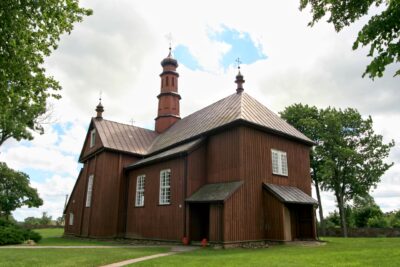This month, our ‘Christian Heritage month by month’ column presents the wooden church of Saints Simon and Jude Thaddeus the Apostles in Lioliai, Diocese of Šiauliai, in Lithuania. Click here for more info

(Photo: E.giedraitis / Commons by Hugo.arg using CommonsHelper)
Wooden architecture is an essential part of Lithuania’s architectural image and heritage. It is a chronicle of the unique history of the nation, which reflects the uniqueness of local building traditions and regional architecture. Located in the Western region of Lithuania, called Samogitia, many well-known wooden churches offer a place of prayer and recollection for the faithful in the region.
Among them, the church of Saints Simon and Jude Thaddeus the Apostles in Lioliai is one of the oldest remaining wooden sacral buildings in the region. Although the precise date of its foundation is unknown, art historians acknowledge that the current house of prayer of the town was built in 1768 and it was granted a popular religious patronage in Samogitia – that of the Saints Simon and Jude Thaddeus the Apostles.
The church is built on a low foundation of stone masonry, developing in three naves with a wide central nave higher than the side and two lateral, intersecting chapels. The lateral naves are much narrower and a little lower, an element that creates an impression of pseudo-basilica. The presbytery, which is of the same size as the central nave, is completed with a triple apse, while sacristies of different sizes are adjacent on both its sides.
Internally, the Baroque style is dominant: one of the most valuable objects is the grand altar of the late Baroque from the late 18th century, decorated with paired statues of Saints. It is complemented by an ornate pulpit from the same period and by the organs, manufactured in the Eastern Prussia. This wooden church is a testimony of the craftsmanship and the diversity of architectural materials used in sacred buildings across Europe.

